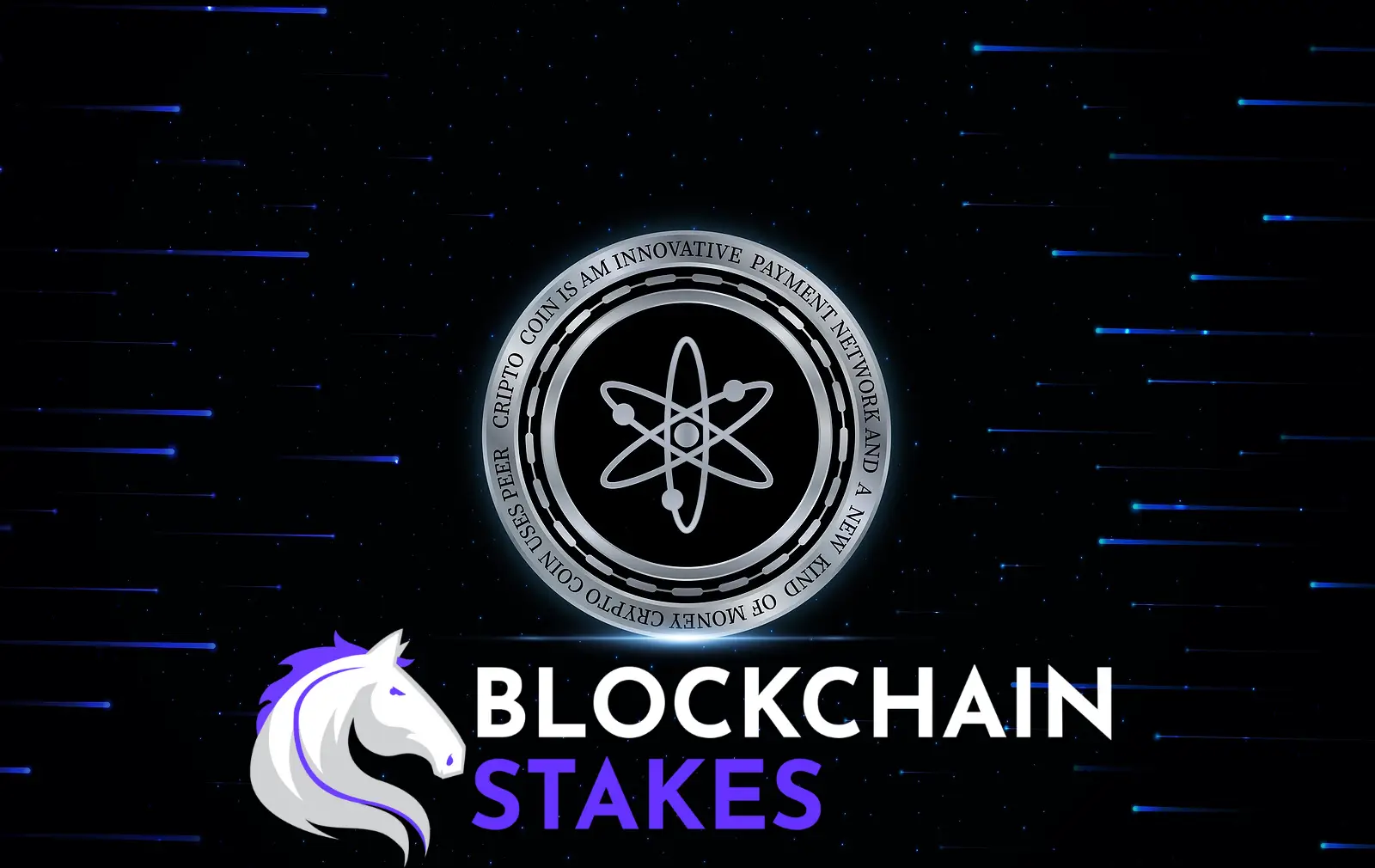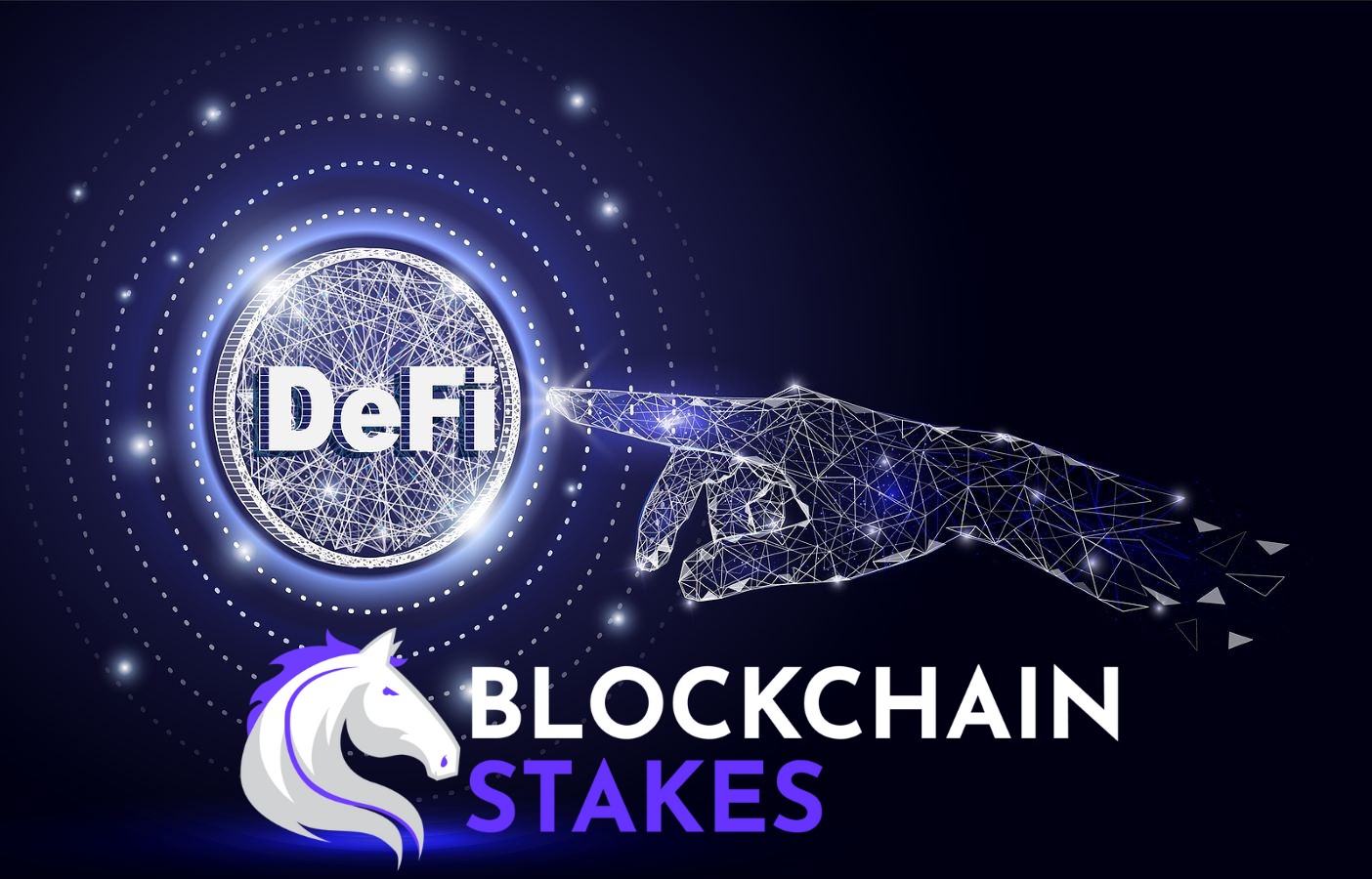Introduction
In the world of blockchain technology, interoperability has emerged as a critical factor for the success and sustainability of decentralized ecosystems. As numerous blockchains develop independently, the need for a seamless way to connect and communicate between them becomes increasingly apparent. Enter the Cosmos Hub, a pioneering solution designed to address this very challenge.
Launched as the first blockchain on the Cosmos network, the Cosmos Hub serves as the primary hub that facilitates interoperability among various blockchains, known as “zones,” within the ecosystem. By enabling secure communication and data exchange, the Cosmos Hub aims to create an “Internet of Blockchains,” where multiple independent blockchains can coexist and interact harmoniously.
At the heart of this innovative network is the ATOM coin, which plays a crucial role in securing the network, governing its operations, and facilitating transactions. But what truly sets the Cosmos Hub apart from other blockchain projects is its unique architecture, leveraging the Tendermint consensus algorithm and the Inter-Blockchain Communication (IBC) protocol to create a robust and flexible infrastructure.
This article delves into the intricacies of the Cosmos Hub, exploring how it works, the pivotal role of the ATOM coin, and the features that distinguish it from other blockchains. Furthermore, we will examine how the Cosmos Hub integrates other blockchains into the Cosmos Network, creating a seamless and interconnected ecosystem.
Understanding the Cosmos Hub
The Cosmos Hub stands as a cornerstone in the Cosmos Network, representing the first blockchain launched in this ambitious ecosystem aimed at enhancing blockchain interoperability. To fully appreciate its significance, it’s essential to understand its foundational components and the roles they play in facilitating secure and efficient communication between various blockchains, or “zones.”
Definition and Role
The Cosmos Hub is designed to be the central hub within the Cosmos ecosystem, a pioneering network that connects multiple blockchains, enabling them to operate together seamlessly. As the primary hub, it maintains a record of the state of each connected zone, ensuring secure and efficient data exchange and communication. This hub-and-spoke model is central to the Cosmos vision of creating an “Internet of Blockchains.”
Tendermint Consensus Algorithm
At the core of the Cosmos Hub’s functionality is the Tendermint consensus algorithm. Tendermint is a Byzantine Fault Tolerant (BFT) consensus mechanism that ensures the network can reach agreement on the state of the blockchain even if some nodes (up to one-third) act maliciously or fail. This consensus algorithm is highly efficient and provides fast finality, meaning that transactions are confirmed quickly and cannot be reversed, which is crucial for maintaining the integrity and security of the network.
Inter-Blockchain Communication (IBC) Protocol
The Inter-Blockchain Communication (IBC) protocol is another fundamental component that powers the Cosmos Hub. The IBC protocol enables secure and decentralized communication between different blockchains within the Cosmos ecosystem. It allows these independent blockchains to transfer data and tokens between one another without needing to rely on a central authority or intermediaries.
IBC operates through a standardized communication layer that all connected blockchains can utilize. This protocol facilitates interoperability by allowing different blockchains to connect and communicate, regardless of their underlying consensus mechanisms or architecture. The result is a network of interoperable blockchains that can share resources and capabilities, thereby enhancing the overall functionality and scalability of the ecosystem.
Key Features
- State Tracking: The Cosmos Hub maintains an updated record of the state of each connected zone, which is critical for ensuring accurate and secure cross-chain transactions and interactions.
- Secure Communication: By leveraging the IBC protocol, the Cosmos Hub ensures that all data and token transfers between connected blockchains are secure and reliable.
- Scalability: The modular architecture, facilitated by Tendermint and IBC, allows the Cosmos ecosystem to scale effectively as more blockchains join the network, without compromising on performance or security.
The Cosmos Hub is the foundational pillar of the Cosmos Network, using advanced technologies like the Tendermint consensus algorithm and the IBC protocol to enable a scalable, secure, and interoperable blockchain ecosystem. By understanding these core components, we can better appreciate how the Cosmos Hub facilitates communication and collaboration between diverse blockchain projects, paving the way for a more connected and efficient decentralized future.
The Role of ATOM in the Cosmos Hub Ecosystem
ATOM, the native cryptocurrency of the Cosmos Hub, is crucial for the network’s security, governance, and economic sustainability. Its multifaceted role ensures the effective functioning and growth of the Cosmos ecosystem.
Network Security
ATOM tokens are integral to the Cosmos Hub’s security through a Proof-of-Stake (PoS) consensus mechanism. Holders of ATOM can stake their tokens to become validators or delegate them to existing validators. Validators are tasked with validating transactions and proposing new blocks, ensuring the network’s integrity and efficiency. Both validators and delegators receive rewards in the form of ATOM tokens, creating a strong incentive to act honestly and maintain the network’s health. This staking process not only secures the network but also aligns the interests of all participants towards its stability and growth.
Governance
ATOM plays a significant role in the governance of the Cosmos Hub. Token holders can participate in on-chain governance by voting on various proposals that affect the network. These proposals can include technical upgrades, parameter changes, and policy decisions. The voting process is transparent and decentralized, giving ATOM holders a direct influence on the network’s future. This democratic approach to governance ensures that the community can collectively steer the development of the Cosmos Hub, fostering a sense of ownership and active participation among its members.
Transaction Fees
Transaction fees within the Cosmos Hub are paid in ATOM. Every operation, such as transferring tokens or executing smart contracts, incurs a fee in ATOM. These fees help to prevent spam transactions and ensure that the network remains efficient and sustainable. By requiring transaction fees, the Cosmos Hub can manage network resources effectively, providing a reliable and secure environment for all users.
Interchain Security (Atom 2.0)
The Atom 2.0 upgrade introduces Interchain Security, a groundbreaking feature that allows smaller blockchains, known as “consumer chains,” to leverage the security of the Cosmos Hub. These consumer chains can use the Cosmos Hub’s existing validator set instead of maintaining their own, benefiting from its robust security framework. This feature enhances the overall security of the Cosmos ecosystem and allows new blockchains to launch and operate without the need to establish and maintain a separate validator network, lowering barriers to entry and fostering innovation.
Economic Sustainability
Atom 2.0 also aims to create new economic models and revenue streams for the Cosmos Hub. By capturing value from services like Interchain Security, the Cosmos Hub can ensure its long-term viability and support ongoing development. These new economic models are designed to sustain the network financially, making it more resilient and capable of adapting to future challenges. The introduction of these revenue streams signifies a forward-thinking approach to the economic sustainability of the Cosmos ecosystem.
Medium of Exchange
While not its primary use, ATOM has the potential to be used as a medium of exchange within the Cosmos ecosystem. As the network of interconnected blockchains grows, ATOM could facilitate transactions for interchain services and applications. This potential use case further embeds ATOM as a versatile and valuable asset within the Cosmos ecosystem, expanding its utility beyond staking, governance, and transaction fees.
ATOM is the lifeblood of the Cosmos Hub, driving its security, governance, and economic sustainability. Its diverse functions ensure the robustness and democratic operation of the network, while features like Interchain Security highlight its innovative approach to fostering a connected and resilient blockchain ecosystem.
What Sets the Cosmos Hub Apart from Other Blockchains
The Cosmos Hub distinguishes itself from other blockchains through its unique architecture and innovative features designed to enable interoperability between multiple independent blockchains. Here’s a closer look at the key aspects that set the Cosmos Hub apart:
Proof-of-Stake Consensus
The Cosmos Hub utilizes the Tendermint Byzantine Fault Tolerant (BFT) consensus algorithm, which is a form of Proof-of-Stake (PoS). Tendermint BFT ensures fast finality and high security, allowing the network to process transactions quickly and reliably. This consensus mechanism is environmentally friendly compared to Proof-of-Work (PoW) systems, as it requires significantly less computational power. The use of Tendermint BFT enhances the scalability and efficiency of the Cosmos Hub, making it suitable for a wide range of applications.
On-Chain Governance
Holders of the ATOM token have the power to participate in the governance of the Cosmos Hub through a transparent and decentralized voting process. This on-chain governance model allows ATOM holders to vote on proposals that impact the network, such as technical upgrades, parameter changes, and policy decisions. This decentralized decision-making process ensures that the community has a direct influence on the network’s development, fostering a sense of ownership and collective responsibility.
Economic Sustainability
Atom 2.0 also aims to create new economic models and revenue streams for the Cosmos Hub, ensuring its long-term sustainability. By capturing value from services like Interchain Security, the Cosmos Hub can generate additional revenue to support its ongoing development and operations. These economic innovations are designed to maintain the financial health of the network, allowing it to continue evolving and expanding.
In essence, the Cosmos Hub’s unique architecture, interoperability protocols, modular design, and governance model set it apart from traditional monolithic blockchain designs. By enabling seamless communication and collaboration between multiple independent blockchains, the Cosmos Hub paves the way for a more connected and efficient decentralized ecosystem.
Integrating Blockchains into the Cosmos Network
The Cosmos Hub serves as the central blockchain that facilitates integration and interoperability between various other blockchains, or “zones,” within the Cosmos ecosystem. This section explores how the Cosmos Hub achieves this integration.
Connecting Zones to the Cosmos Hub
Each new blockchain, or zone, developed within the Cosmos ecosystem is connected to the Cosmos Hub. The Hub maintains an updated record of the state of each connected zone, enabling secure communication and data exchange among them. This connection allows zones to interoperate while maintaining their sovereignty, creating a network of diverse blockchains that can share resources and functionality.
Inter-Blockchain Communication (IBC) Protocol
The IBC protocol is a fundamental innovation that enables secure and decentralized communication between different blockchains within the Cosmos network. IBC allows the transfer of data and tokens across zones, facilitating true interoperability. By providing a standardized communication layer, IBC ensures that all connected blockchains can interact seamlessly, regardless of their underlying technologies. This protocol is crucial for enabling the exchange of assets and information between diverse blockchains within the Cosmos ecosystem.
Hub-and-Spoke Model
The Cosmos Hub follows a hub-and-spoke model, acting as a central hub that connects various zones within the Cosmos ecosystem. This architecture allows each zone to maintain its independence while benefiting from the interoperability facilitated by the Cosmos Hub. The hub-and-spoke model ensures efficient communication and data transfer across the network, promoting a collaborative and interconnected blockchain environment.
Modular Design with Cosmos SDK
The Cosmos SDK provides a modular framework and tools for developers to easily build custom blockchains, or zones, that can connect to the Cosmos Hub. This SDK simplifies the creation of application-specific blockchains tailored to different use cases, ensuring that each zone can integrate seamlessly with the broader Cosmos ecosystem. The modular design fosters innovation and flexibility, allowing developers to build diverse and specialized blockchains that contribute to the overall functionality of the network.
Interchain Security
With the Atom 2.0 upgrade, the Cosmos Hub introduced Interchain Security, allowing smaller blockchains, or consumer chains, to leverage the Hub’s validator set for security. This feature enables these chains to benefit from the robust security infrastructure of the Cosmos Hub without needing to maintain their own validators. Interchain Security enhances the overall security and interoperability of the Cosmos ecosystem, making it easier for new blockchains to join and thrive within the network.
Bridges to External Blockchains
The Cosmos Hub also facilitates interoperability with external blockchains like Bitcoin and Ethereum through bridges. These bridges enable the Cosmos Hub to connect with blockchains that do not meet the Cosmos protocol requirements, allowing for the transfer of assets and data across different blockchain ecosystems. By providing these bridges, the Cosmos Hub extends its interoperability beyond the Cosmos network, promoting a more connected and versatile blockchain environment.
The Cosmos Hub acts as the central hub, enabling seamless communication and interoperability between various blockchain applications or zones within the Cosmos network. This integration is facilitated by the IBC protocol, the hub-and-spoke model, and the modular design of the Cosmos SDK, creating a robust and interconnected blockchain ecosystem.
Key Takeaways
The Cosmos Hub represents a pioneering advancement in the blockchain space, with its unique architecture and innovative technologies setting it apart from traditional blockchains. Acting as the central hub in a network of interconnected blockchains, the Cosmos Hub facilitates seamless interoperability and communication among diverse, application-specific blockchains known as “zones.”
At the heart of this ecosystem is ATOM, the native cryptocurrency of the Cosmos Hub, which plays a critical role in securing the network, enabling governance, and ensuring economic sustainability. Through staking, governance participation, and transaction fees, ATOM drives the functionality and growth of the Cosmos Hub, while innovations like Interchain Security introduced in Atom 2.0 further extend its utility.
The Cosmos Hub’s hub-and-spoke model, underpinned by the Inter-Blockchain Communication (IBC) protocol and the modular design provided by the Cosmos SDK, enables a flexible, scalable, and secure environment for blockchain development and interaction. These features allow for true interoperability among heterogeneous blockchains, fostering a collaborative ecosystem where diverse blockchains can interoperate while maintaining their independence.
In addition, the Cosmos Hub extends its interoperability capabilities through bridges to external blockchains like Bitcoin and Ethereum, ensuring that even blockchains outside the Cosmos protocol can benefit from this interconnected network.
Overall, the Cosmos Hub stands out as a central pillar in the blockchain ecosystem, offering a robust platform for the integration and interaction of multiple blockchains. Its innovative approach to interoperability, security, and governance paves the way for a seamless and connected future in the blockchain world. As the Cosmos ecosystem continues to evolve, the Cosmos Hub will remain at the forefront, driving the development















